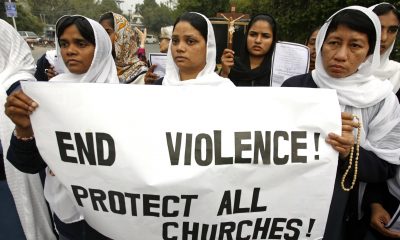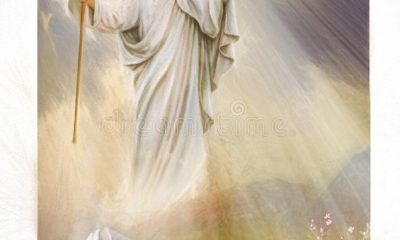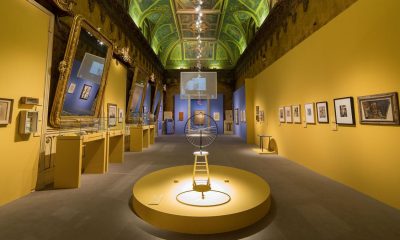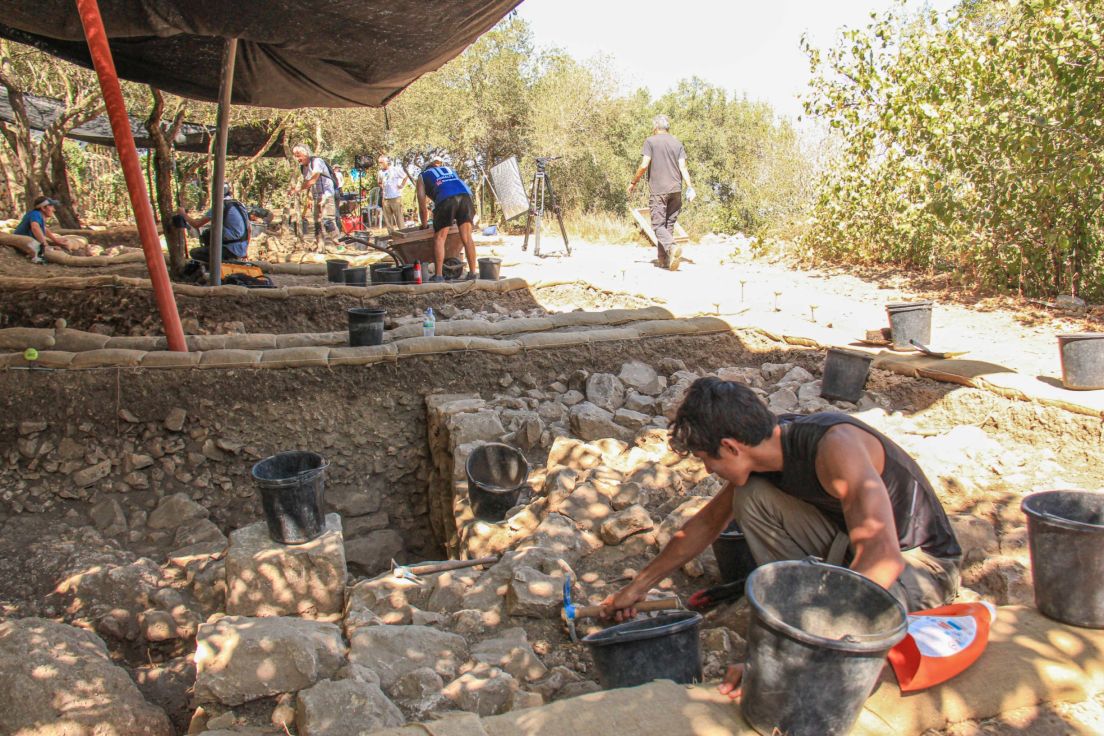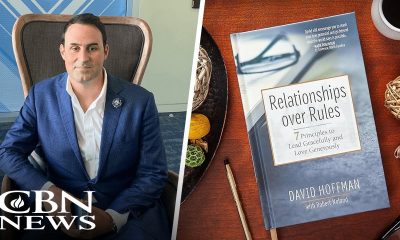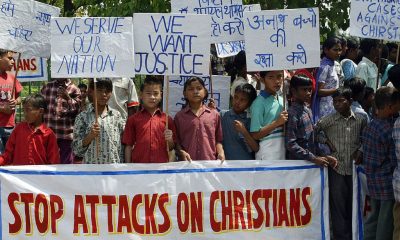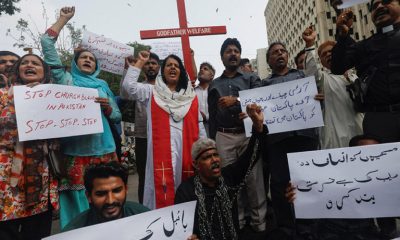world news
Italian Scientific Technique Dates Shroud of Turin to Around the Time of Christ’s Death and Resurrection
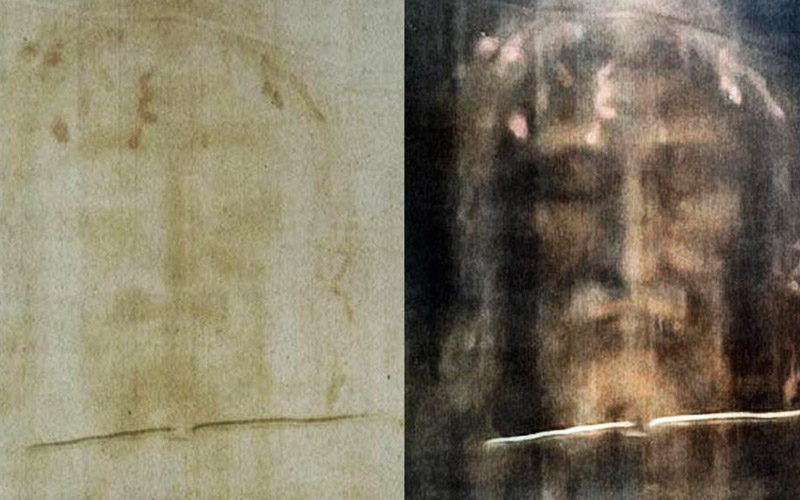
An Italian scientist is claiming a new technique using X-ray dating shows the Holy Shroud of Turin to be much older than some scientists have stated, and that it does in fact coincide with Christian tradition by dating back to around the time of Christ’s death and resurrection.
Working with a team of other researchers, Liberato De Caro of Italy’s Institute of Crystallography of the National Research Council in Bari used a “Wide-Angle X-ray Scattering” method to examine the natural aging of cellulose that constitutes a sample of the famous linen cloth.
They concluded that their peer reviewed research shows the Holy Shroud is compatible with the hypothesis that it is much older than seven centuries old — the conclusion reached in 1988 using carbon dating techniques — and is around 2,000 years old.
In this April 13 email interview with the Register, De Caro, who has been investigating the Holy Shroud for 30 years, explains more about the discovery, why he believes the X-Ray technique is superior to carbon dating for determining the age of fabric fibers, and discusses other recent discoveries that also point to the Holy Shroud’s authenticity.
Dr. De Caro, please could you share with us in layman’s terms your findings regarding the Holy Shroud of Turin?
The Shroud of Turin is the most important relic of Christianity. According to Christian tradition, it is the burial shroud that would have wrapped the body of Jesus after his crucifixion.
For about 30 years, I have been using investigative techniques on the scale of atoms, in particular through X-rays, and three years ago we developed a new method for dating samples taken from linen fabrics. A macroscopic example of a fabric microfiber is like that of a bundle of spaghetti: at first they all have the same length, but if you subject the bundle to accidental shocks, the more the shocks increase, the more the spaghetti breaks. As the number of shocks increases, always of the same intensity, the average length of the spaghetti decreases over time, until it reaches a minimum length.
A similar thing happens to the polymer chains of cellulose which, like spaghetti but with a section on the scale of a billionth of a meter, gradually break over the centuries due to the combined effect of temperature, humidity, light and the action of chemical agents in the environment in which they are found. Natural aging depends only on ambient temperature and relative humidity. We have therefore developed a method to measure the natural aging of flax cellulose using X-rays and then convert it into time elapsed since fabrication. The new dating method, based on a technique called Wide Angle X-ray Scattering, was first tested on linen samples already dated using other techniques, on samples that had nothing to do with the Shroud, and then applied to a sample taken from the Shroud of Turin.
How long did your research take and has it, or will it be, peer reviewed?
The research started in 2019 but then the pandemic regrettably caused delays. We finally applied the new X-ray dating technique to a sample of the Shroud of Turin, and the findings of the research were published in the international journal Heritage after about a month of preparation and revision, during which our work was evaluated and peer reviewed by three other independent experts and the journal’s editor. The research has also been highlighted on the website of the Consiglio Nazionale delle Ricerche [Italy’s National Research Council].
The study was carried out in the X-ray laboratories of the Institute of Crystallography of the National Council of Research (Bari, Italy), in collaboration with Professor G. Fanti of the University of Padua.
Has the Wide-Angle X-ray Scattering method been used before?
The first published paper from 2019 demonstrated the reliability of the new X-ray dating technique on a series of samples, taken from linen fabrics ranging in age from 3000 BC to 2000 AD (see black, red, green and blue curves in the figure below). These curves show that the sample of the Shroud of Turin (orange curve in the picture) should be much older than the approximately seven centuries indicated by the radio-dating carried out in 1988. [To see the same figure with axes and scientific detail see here].
How accurate are the methods you’ve used compared to the carbon dating methods previously used, particularly the research used in 1988?
In 1988, carbon-14 dating [also called radiocarbon dating, a method of age determination that depends upon the decay to nitrogen of radiocarbon] of samples taken from the Shroud by three separate laboratories indicated that it should only be about seven centuries old. Therefore, according to the results of the radio-dating, the shroud wouldn’t be an authentic relic since it is from the medieval period. However, fabric samples are usually subject to all kinds of contamination, which cannot always be controlled and completely removed from the dated specimen. About half the volume of a natural fiber yarn is empty space, interstitial space, filled with air or something else, between the fibers that compose it. Anything that gets in between the fibers must be carefully removed. If the cleaning procedure of the sample is not thoroughly performed, carbon-14 dating is not reliable. This may have been the case in 1988, as confirmed by experimental evidence showing that when moving from the periphery towards the center of the sheet, along the longest side, there is a significant increase in carbon-14 [radiocarbon].
In short, we are dealing with two dating techniques — radiocarbon and X-ray — which have very different results. In such cases, when two different techniques do not agree on a date, caution is required before final conclusions are reached. The technique of dating linen by X-ray is non-destructive. Therefore, it can be repeated several times on the same sample. Considering the results of medieval dating obtained by carbon-14, and those obtained by WAXS analysis which show compatibility with 2000 years of history, it would be more than desirable to have a collection of X-ray measurements carried out by several laboratories, on several samples, at most millimetric in size, taken from the Shroud. The technique using X-rays requires very small tissue samples, with linear dimensions even smaller than 1 mm, and this is an advantage compared to radio-dating, which usually requires much larger samples and is destructive, since only one measurement of the carbon-14 content can be made on the same sample.
What is your view on other theories that are said to prove the authenticity of the Holy Shroud, for example botanical evidence found in 1999, or radiation caused by an earthquake that induced the image on the shroud?
The documented history of the Shroud spans seven centuries and all of it located in Europe. Based on the results of radio-dating, the Shroud would be seven centuries old and has always been in Europe. However, the earlier study of pollen trapped in its fibers had already shown a consistent presence of pollen from the Middle East, in particular from the ancient region of Palestine, as if the Shroud had been in that geographical area and not in Europe for a significant period of its history.
In order to be more certain about the pollen, we could go back to analyzing the Shroud with the aim of understanding in which geographical areas it might have been. In fact, our study has shown that dating depends on the average secular temperature of the geographical region in which the linen artefact was preserved. The presence of pollen or minerals typical of some regions and not of others could help clarify its ‘hidden history,’ its presence in other geographical regions characterized by much higher temperatures than those in Europe.
The Shroud of Turin challenges science, and each new piece of research could clarify part of the complex puzzle this relic represents. For example, the Shroud’s image has yet to find a definitive explanation from those who have studied it, an explanation shared by the entire scientific community. It is as if a photographic plate had been imprinted by radiation. By studying the traces left on the plate, one tries to trace the nature of the radiation and its properties. The same could be done for the Shroud’s image.
For this reason, the idea that a neutron flux could have enriched the linen fabric of the Shroud with carbon-14, distorting its radio-dating, dates back to 1989. One of two short contributions, one by T. J. Phillips, also published in the journal Nature, begins with these words: “If the Shroud of Turin is in fact the burial cloth of Christ, contrary to its recent carbon-dated age of about 670 years (Nature 335, 663; 1988 and 337, 611; 1989), then according to the Bible it was present at a unique physical event: the resurrection of a dead body. Unfortunately, this event is not accessible to direct scientific scrutiny.”
Therefore, if, from a scientific point of view, one rejects a priori to investigate the hypothesis of the resurrection and the traces that it could have left on the linen cloth, it is necessary to go in search of natural phenomena that, by chance, could have caused a consistent flow of neutrons, so as to change the isotopic abundance of carbon-14 of the shroud — as the hypothesis of the earthquake, to which you refer, proposes. At this point, one has to ask: do we have evidence anywhere else in the world of at least one scientifically verified case in which a natural phenomenon has changed the isotopic abundance of a chemical element?
Is there such evidence?
Yes, an answer to this question can be found at Oklo, a uranium deposit near Franceville, south-east Gabon, from which the fuel for French nuclear power stations is extracted. At enrichment plants, the concentration of uranium-235 in the ore extracted from the mines is always checked to ensure it is of natural origin. The proportion of uranium-235 in relation to all possible isotopes is fixed, and is also the same for lunar samples and meteorites.
In June 1972, a shipment arrived at Pierrelatte in France with a lower than natural composition, so much so that the authorities were alerted, and a scientific investigation began which lasted several months. It was discovered that in the past, in 17 strands of the deposit, the right conditions had been created so that the neutrons emitted in spontaneous fissions of uranium, slowed down by the water circulating in the deposit, could reproduce a chain reaction that locally reduced the natural isotopic abundance of uranium-235.
What does this example show? That sometimes, even in nature, very special conditions occur which, due to a combination of factors, make what has happened truly unique and unrepeatable. Therefore, wisdom should teach us to be very humble, respectful and prudent when studying natural phenomena, before coming to definitive conclusions that may sometimes be hasty and therefore wrong. Obviously, this is all the more true when it comes to the resurrection of Jesus Christ, a unique event in history which countless people believe. At least caution is warranted out of respect for this faith.
How significant are your findings for the Church and will the Vatican be involved in trying to authenticate them?
The Archdiocese of Turin more than the Vatican could be interested in this kind of research. In fact, in 2002 some threads were already taken from the Shroud and kept by the Archdiocese of Turin for future scientific studies. It would be enough to take 1-mm-long samples from these threads, combine them with other linen samples taken from other ancient fabrics of known date, and involve several laboratories in a dating experiment using the technique we have developed that uses X-rays. It could also be carried out as a blind experiment, that is, without laboratories knowing which samples are taken from the Shroud compared with those taken from other linen fabrics, to avoid any possible bias in the data analysis by the authors of the research.
Will you be doing more work on the Holy Shroud to further authenticate its true date?
It all depends on the possibility of having new samples to analyze. In any case, besides the Shroud, there are other important linen relics traditionally associated with Jesus, for example, the Sudarium of Oviedo or the Veil of Manoppello, which I have also studied in the past. This new dating technique is only in its infancy. It could, for example, also be extended to fabrics made from other plant fibers.
Sources:ncregister
world news
പാക്ക് ക്രൈസ്തവര് നേരിടുന്നത് കടുത്ത പീഡനം; സംരക്ഷണം ഉറപ്പാക്കാന് ഭരണകൂടം തയാറാകണമെന്ന് സന്നദ്ധ സംഘടന
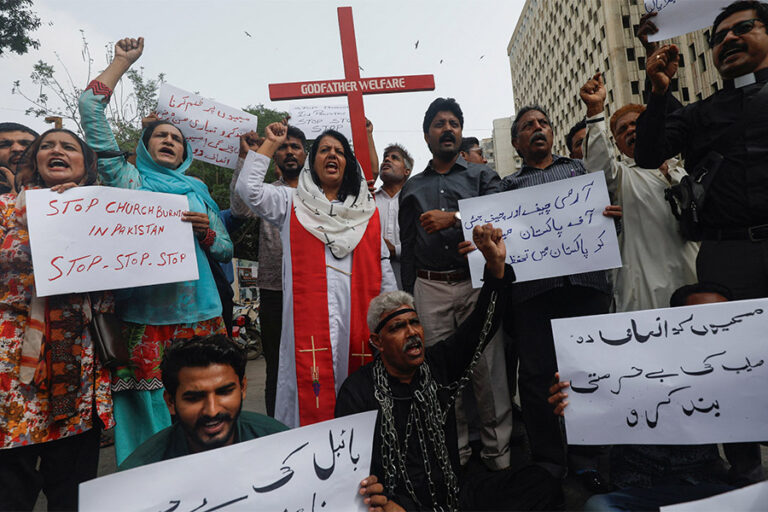
ലാഹോർ: പാക്കിസ്ഥാനിലെ ക്രൈസ്തവരുടെ സംരക്ഷണം ഉറപ്പാക്കാൻ ഫെഡറൽ, പ്രവിശ്യാ സർക്കാരുകള് തയാറാകണമെന്ന് സന്നദ്ധ സംഘടനയായ ഡിഗ്നിറ്റി ഫസ്റ്റ്. കഴിഞ്ഞ ഓഗസ്റ്റിൽ പഞ്ചാബിലെ ജരൻവാലയിൽ ക്രിസ്ത്യൻ സമൂഹത്തിന് നേരെ നടന്ന ആക്രമണത്തിന് ശേഷം, 2024 വർഷത്തിൻ്റെ ആദ്യ പകുതിയിൽ ക്രിസ്ത്യാനികൾക്കെതിരായ അക്രമവും വിദ്വേഷവും വര്ദ്ധിക്കുന്നതിനാണ് സാക്ഷ്യം വഹിച്ചതെന്ന് സംഘടന ചൂണ്ടിക്കാട്ടി. ഡിഗ്നിറ്റി ഫസ്റ്റ് ‘പെർസിക്യൂഷൻ വാച്ച്’ എന്ന പേരില് പുറത്തിറക്കിയ റിപ്പോർട്ടില് ആക്രമണങ്ങൾ, കൊലപാതകങ്ങൾ, പീഡനങ്ങൾ, തട്ടിക്കൊണ്ടുപോകലുകൾ, ലൈംഗികാതിക്രമങ്ങൾ, നിർബന്ധിത മതപരിവർത്തനം, ക്രിസ്ത്യാനികൾക്കെതിരായ മതനിന്ദ ആരോപണങ്ങൾ, ഭൂമി തട്ടിയെടുക്കൽ, കുടിയൊഴിപ്പിക്കൽ തുടങ്ങീ ക്രൈസ്തവര്ക്ക് നേരെ വിവിധങ്ങളായ ആക്രമണങ്ങളാണ് അരങ്ങേറുന്നതെന്ന് സംഘടന പറയുന്നു.
ജനുവരി മുതൽ ജൂൺ വരെ കഴിഞ്ഞ ആറ് മാസത്തിനിടെ നടത്തിയ ആക്രമണങ്ങള് ഭയാനകമാണെന്നും, സംരക്ഷണം ഉറപ്പാക്കാൻ ഭരണകൂടം അടിയന്തര പ്രായോഗിക നടപടികൾ സ്വീകരിക്കണമെന്നും ഡിഗ്നിറ്റി ഫസ്റ്റ് എക്സിക്യൂട്ടീവ് ഡയറക്ടർ യൂസഫ് ബെഞ്ചമിൻ മാധ്യമങ്ങളോട് പറഞ്ഞു. ആറ് മാസത്തിനുള്ളിൽ ക്രൈസ്തവര്ക്ക് നേരെ എഴുപതിലധികം ആക്രമണങ്ങൾ ഉണ്ടായിട്ടുണ്ടെന്നും ഇത് നൂറ്റിനാല്പ്പതിലധികം ക്രിസ്ത്യൻ കുടുംബങ്ങളെ ബാധിച്ചതായും ബെഞ്ചമിൻ വെളിപ്പെടുത്തി.
പഞ്ചാബ് പ്രവിശ്യയിൽ മാത്രം അഞ്ച് അക്രമ ആക്രമണങ്ങളാണ് ഉണ്ടായത്. ഇവയില് 3 എണ്ണം ക്രിസ്ത്യൻ കുടുംബങ്ങളെയും 2 ആക്രമണം പള്ളികളെ ലക്ഷ്യമാക്കിയായിരിന്നുവെന്നും അദ്ദേഹം ചൂണ്ടിക്കാട്ടി. ക്രൈസ്തവര് ജോലി മേഖലയിലും വിദ്യാഭ്യാസ മേഖലയിലും പിന്തള്ളപ്പെടുന്നുണ്ട്. ക്ലീനിംഗ് ജോലികൾക്ക് ‘ക്രിസ്ത്യാനികൾക്ക് മാത്രമേ’ അപേക്ഷിക്കാനാകൂ എന്ന വിവേചനപരമായ തൊഴിൽ പരസ്യം ഖൈബർ പഖ്തൂൺഖ്വയിലെ പത്രങ്ങളിൽ പ്രസിദ്ധീകരിച്ചതും സംഘടന ചൂണ്ടിക്കാട്ടുന്നു.
8 ക്രിസ്ത്യൻ ആരോഗ്യ പ്രവർത്തകർക്കു ജോലിസ്ഥലത്ത് വിവേചനം നേരിടുകയും സുരക്ഷാ കിറ്റുകളുടെ അഭാവം മൂലം ജീവൻ നഷ്ടപ്പെടുകയും ചെയ്തു. എട്ടോളം ക്രിസ്ത്യൻ പെൺകുട്ടികളെ തട്ടിക്കൊണ്ടുപോയി ലൈംഗികമായി ചൂഷണം ചെയ്ത ശേഷം നിർബന്ധിത മതപരിവർത്തനം നടത്തിയതായി ഡിഗ്നിറ്റി ഫസ്റ്റ് ശേഖരിച്ച വിവരങ്ങൾ വെളിപ്പെടുത്തുന്നു. ഇവരുടെ പ്രായം 11നും 16നും ഇടയിലാണെന്നതാണ് ശ്രദ്ധേയമായ വസ്തുത. പെണ്കുട്ടികളില് 7 പേർ പഞ്ചാബിൽ നിന്നും 1 പേർ സിന്ധിൽ നിന്നുമാണ്. ലാഹോറിൽ ഇസ്ലാം മതം സ്വീകരിക്കാൻ വിസമ്മതിച്ചതിനെ തുടർന്ന് 13 വയസ്സുള്ള ക്രിസ്ത്യൻ ബാലനെ വിഷ പദാർത്ഥം കഴിക്കാൻ നിർബന്ധിച്ചുവെന്നും സംഘടന റിപ്പോര്ട്ടില് വെളിപ്പെടുത്തുന്നുണ്ട്.
കടപ്പാട് :പ്രവാചക ശബ്ദം
world news
കോംഗോയിൽ ഭീകരാക്രമണം; 3 ക്രൈസ്തവർ കൊല്ലപ്പെട്ടു
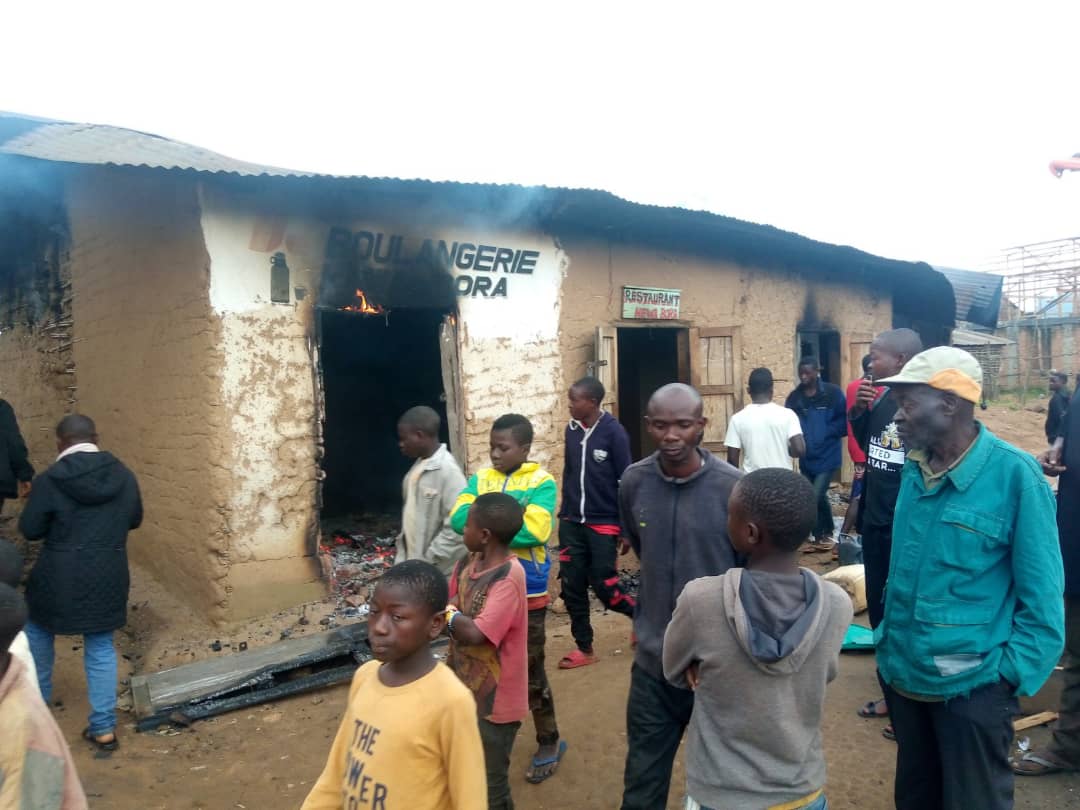
കോംഗോ : കോംഗോയിലെ മാമോവിന് സമീപമുള്ള ഒരു ക്രിസ്ത്യൻ ഗ്രാമത്തിനു നേരെയാണ് ഇസ്ലാമിസ്റ്റ് അലൈഡ് ഡെമോക്രാറ്റിക് ഫോഴ്സ് എന്ന ഭീകരവാദികൾ ആക്രമണം നടത്തിയത്. ആക്രമണത്തിൽ മൂന്ന് ക്രൈസ്തവർ കൊല്ലപ്പെട്ടു. നിരവധി പേരെ ഭീകരർ തട്ടിക്കൊണ്ടുപോകുകയും ചെയ്തു.
ജൂലൈ 16-ന് രാത്രിയാണ് ആക്രമണം ഉണ്ടായത്. ആക്രമണത്തിൽ ഏഴ് വീടുകൾ കത്തിനശിച്ചു. പ്രദേശവാസികളോടും ചുറ്റുമുള്ള സമൂഹങ്ങളോടും ജാഗ്രത പാലിക്കാൻ ആംഗ്ലിക്കൻ ചർച്ച് ഓഫ് ബെനിയുടെ ബിഷപ്പ് ആഹ്വാനം ചെയ്തു.
Sources:christianlive
world news
ടൂറിസ്റ്റുകൾക്ക് ആരോഗ്യഇൻഷൂറൻസ് പദ്ധതിയുമായി യു.എ.ഇ

ദുബൈ: ടൂറിസ്റ്റുകൾക്ക് ആരോഗ്യഇൻഷൂറൻസ് പദ്ധതിയുമായി യു.എ.ഇ. രാജ്യത്തെ ഫെഡറൽ അതോറിറ്റി ഫോർ ഐഡന്ററി, സിറ്റിസൻഷിപ്പ്, കസ്റ്റംസ് ആൻഡ് പോർട്ടാണ് (ICP) രാജ്യത്ത് ടൂറിസ്റ്റുകളായി എത്തുന്നവർക്ക് ആരോഗ്യ ഇൻഷൂറൻസ് ലഭ്യമാക്കാൻ പുതിയ പദ്ധതി നടപ്പാക്കുന്നത്. യു.എ.ഇ സന്ദർശിക്കാൻ വിസക്ക് അപേക്ഷിക്കുമ്പോൾ തന്നെ ആരോഗ്യ ഇൻഷൂറൻസിനും അപേക്ഷ നൽകാൻ ICP യുടെ വെബ്സൈറ്റിലും, മൊബൈൽ ആപ്ലിക്കേഷനിലും സൗകര്യമുണ്ടാകും. ഇൻഷൂറൻസ് തുക, മറ്റ് സേവന മാനദണ്ഡങ്ങൾ എന്നിവ രാജ്യത്തെ പ്രമുഖ ഇൻഷൂറൻസ് കമ്പനികളുമായി ചേർന്നാണ് നടപ്പാക്കുകയെന്ന് ഫെഡറൽ അതോറിറ്റി അറിയിച്ചു. യു.എ.ഇയിൽ വിനോദസഞ്ചാരികളായി എത്തുന്ന സന്ദർശകർക്ക് അടിയന്തരഘട്ടങ്ങളിൽ രാജ്യത്തെ ആശുപത്രികളെ ചികിൽസക്കായി ആശ്രയിക്കുന്നതിന് ഈ പദ്ധതി ഏറെ ഗുണം ചെയ്യുമെന്നാണ് വിലയിരുത്തൽ. പുതിയ പദ്ധതിയെ വിവിധ ഇൻഷൂറൻസ്, ആരോഗ്യ സ്ഥാപനങ്ങൾ സ്വാഗതം ചെയ്തു.
Sources:globalindiannews
-

 us news11 months ago
us news11 months agoനോര്ത്ത് അമേരിക്കന് പെന്തക്കോസ്തല് റൈറ്റേഴ്സ് ഫോറം; അറ്റ്ലാന്റാ ചാപ്റ്ററിന് പുതിയ ഭാരവാഹികള്
-
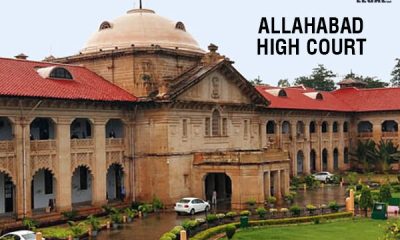
 National11 months ago
National11 months agoബൈബിൾ വിതരണം ചെയ്യുന്നതും നല്ല മൂല്യങ്ങൾ പഠിപ്പിക്കുന്നതും മതപരിവർത്തനമല്ല: അലഹബാദ് ഹൈക്കോടതിയുടെ നിര്ണ്ണായക വിധി
-

 world news10 months ago
world news10 months ago50 രാജ്യങ്ങളിലേക്ക് കുവൈത്ത് പൗരന്മാർക്ക് വിസയില്ലാതെ സഞ്ചരിക്കാം
-

 National5 months ago
National5 months agoനെയ്തേലിപ്പടി ക്രൂസേഡിന് അനുഗ്രഹീത സമാപ്തി
-

 Life11 months ago
Life11 months agoസൂര്യനെ ലക്ഷ്യമിട്ട് കുതിച്ച് ആദിത്യ എൽ1; ഇന്ത്യയുടെ ആദ്യ സൗരദൗത്യം വിജയകരം
-
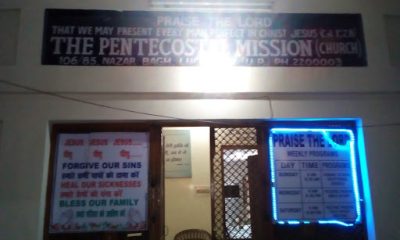
 National9 months ago
National9 months agoPentecostal mission center demolished in India; pastor, 17 others arrested
-

 Life10 months ago
Life10 months agoമനുഷ്യന് താമസിക്കാന് ചന്ദ്രനില് വീടുകള്; നാസ 3ഡി പ്രിന്ററുകള് ചന്ദ്രനിലേക്കയക്കും
-

 Sports6 months ago
Sports6 months agoMichigan Head Coach Jim Harbaugh Reveals ‘Mini Revival’, 70 Players Baptized Last Season

